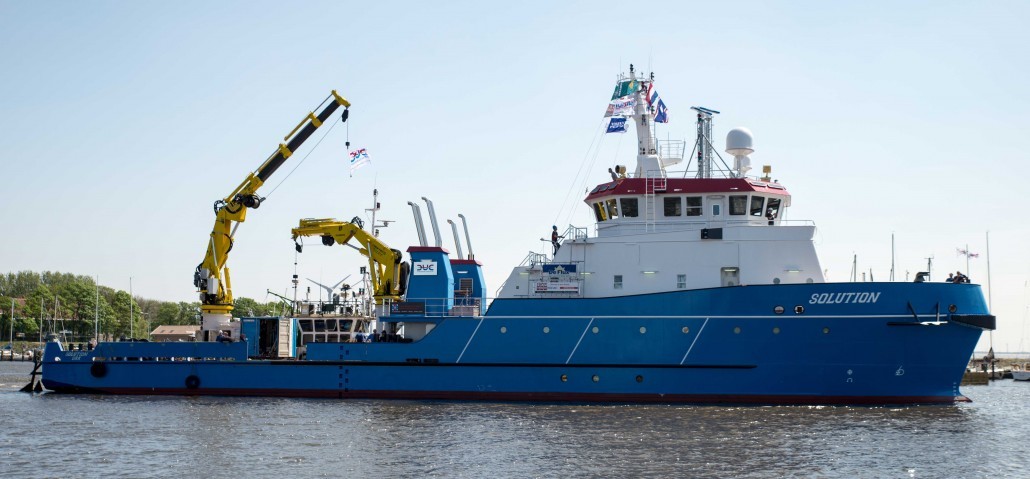Last week saw the recommencement of Australia’s political Climate Wars after the Covid-19 inspired ceasefire with the Morrison Government’s publication of its gutless technology-neutral Technology Roadmap. However, while Energy Minister Angus Taylor tries to tell the Australian people that solar is a mature industry and at the same time claim that mature technologies don’t yet exist to reduce emissions, Sun Cable’s mega solar export project getting real work done.
The Sun Cable project is a proposed 10 GW solar farm in Tennant Creek, Northern Territory (NT)m that seeks to export its renewable energy by an unprecedented undersea cable to Singapore.
Last week, Sun Cable awarded its cable route survey contract to Guardian Geomatics Pty. Ltd. (Guardian Geomatics), a significant step in the development of the unprecedented 3,750km HVDC subaqueous cable proposed to run from Darwin to Singapore.
The contract is for an initial survey of the multi-billion-dollar project to export solar to Asia via the Australia-ASEAN Power Link (AAPL), a project that already has the backing of at least two Aussie billionaires, including Atlassian boss Mike Cannon-Brookes.
Guardian Geomatics Commercial Director, Steve Duffield, said that the company is “always on the lookout for opportunities to improve our footprint and sustainability – this project is a step in the right direction and something we are very proud of.” A notion echoed by Sun Cable CEO David Griffin who said that his highly ambitious company is “thrilled to have engaged Guardian Geomatics to undertake this critical survey work.”
Guardian Geomatics is planning to borrow its sister company’s vessel “Offshore Solution,” for the purposes of the survey slated to begin later in 2020. “Offshore Solution” is a decent enough name of course, but surely the public would prefer something more along the lines of “Cabley McSurvey.”
The Cable
Andrew Blakers of the Australian National University’s (ANU) School of Engineering and Computer Science told pv magazine Australia that the AAPL cable is “beyond current state of the art,” due to its length and the fact that it will run undersea rather than overland. However, Blakers expects technology to advance at such a rate during the 2020s as to warrant the High Voltage Direct Current (HVDC) cable transmission aspect of the project feasible.
However, significant risk remains. The cable will need to traverse volatile geopolitical and tectonic boundaries. Australia and Indonesia have had a fraught relationship in recent years, and a major tectonic shift could easily snap the cable. The singular nature of the cable means that the entire project is held hostage to the cable’s integrity. “A cable rupture would produce a major shock in such a small electricity market as Singapore,” noted Blakers. So, Guardian Geomatics has no small task on its hands.
Nevertheless, Sun Cable is a rare example of great ambition allied with a will to action. So often in life a great ambition can prove stifling, but Sun Cable is not one to rest on its laurels. The awarding of the cable survey was quickly followed this week by the announcement that the AAPL project’s integral 100 MW/200 MWh megabattery has received NT EPA approval. Canberra may be a deafening chasm but it’s all happening up in the Top End.
This content is protected by copyright and may not be reused. If you want to cooperate with us and would like to reuse some of our content, please contact: editors@pv-magazine.com.









1 comment
By submitting this form you agree to pv magazine using your data for the purposes of publishing your comment.
Your personal data will only be disclosed or otherwise transmitted to third parties for the purposes of spam filtering or if this is necessary for technical maintenance of the website. Any other transfer to third parties will not take place unless this is justified on the basis of applicable data protection regulations or if pv magazine is legally obliged to do so.
You may revoke this consent at any time with effect for the future, in which case your personal data will be deleted immediately. Otherwise, your data will be deleted if pv magazine has processed your request or the purpose of data storage is fulfilled.
Further information on data privacy can be found in our Data Protection Policy.